Osgood-Schlatter Disease | Symptoms, Causes and Diagnosis
Read More >
Osgood-Schlatter disease is a painful condition that affects the prominence at the top of the shin bone at the front of the knee. It is an inflammatory condition that develops due to an overload of the attachment of the patella tendon on the tibial tuberosity. In an unmatured skeleton, as the bones are still soft it is the bone that becomes irritated and inflamed. One of the best forms of treatment for Osgood-Schlatter disease is rehabilitation exercises, which provide pain relief and increase recovery time.
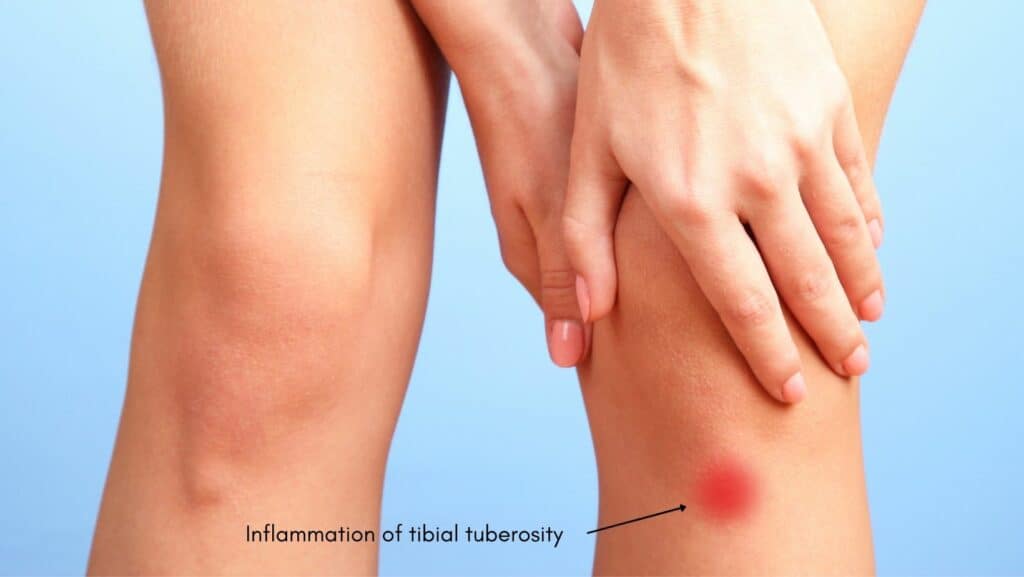
Physical therapy is the best treatment option for the majority of cases of Osgood-Schlatter disease. It is a therapy that encompasses hands-on treatment for Osgood-Schlatters such as massage and assisted stretches, as well as active treatments that the patient can do themselves at home to speed up recovery time, such as stretches and strengthening exercises.
Part of the management of Osgood-Schlatter disease is relaxing the quadriceps muscle. The quadriceps muscle attaches to the tibial tuberosity via the patella tendon. Relaxation of muscles can be done in a number of ways, stretching and foam rolling are two easy and affordable options.
Lie on your front with your thighs on top of the foam roller, supporting your weight on your forearms or hands. Very slowly roll your thighs on the roller, it is recommended to work on a small part of the muscle about 10-20cm and to roll up and down until it feels less tender and more relaxed. You can then move the roller under a different part of the quadriceps and repeat.
Spend a thorough 10 minutes rolling your quads daily, at least once.
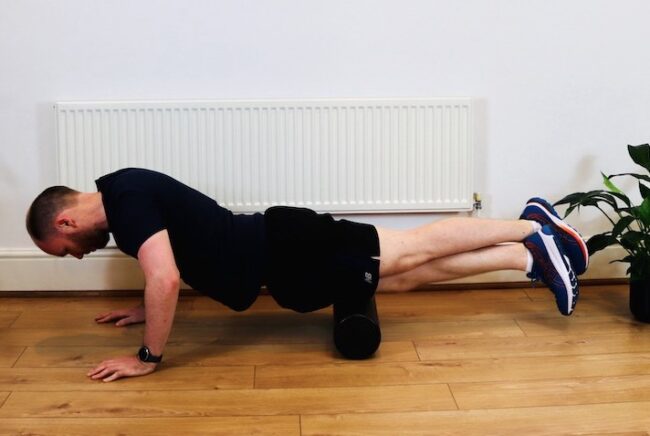
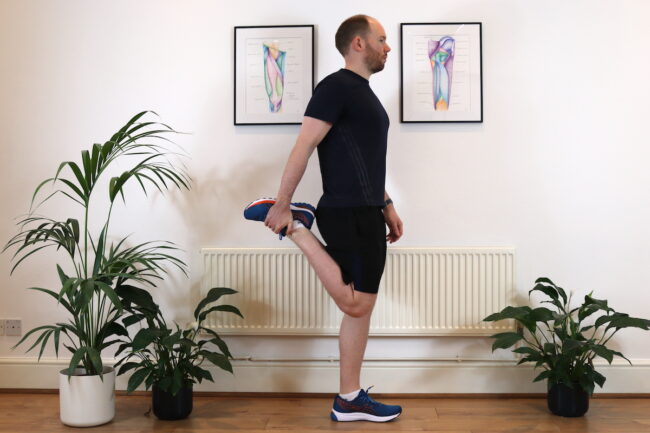
Lie on your front or stand on one leg, bend your knee and reach to hold your ankle with your hand. Pull your ankle towards your buttocks until you feel a stretch at the front of your thigh. If you are standing, make sure your thighs are parallel to get a better stretch.
Hold the stretch for 45seconds, then relax. You can repeat this every 2-3 hours provided it isn’t painful on the front of your knee.
Rehabilitation exercises, asides from stretches, focus on strengthening the posterior sling of muscles, which include the calf, hamstrings and glute. If these muscles are strong and working efficiently your quadriceps will work relatively less with common movements such as squatting, stepping up or down, running and jumping. This can reduce the load on the quadriceps muscle, therefore also on the patella tendon insertion onto the tibial tuberosity.
Lie on your back with your knees bent to 90º and feet flat on the floor. Tilt your pelvis backwards to flatten your back against the floor, continue this curling movement and lift your pelvis up, feeling each vertebra lift off the floor one at a time. You can use a band around your thighs to push out against, to get more glute activation with this exercise. This will work your hamstrings and glute muscles.
Lift and lower 12 times, then rest for 2-3 minutes, then repeat for 3 sets.
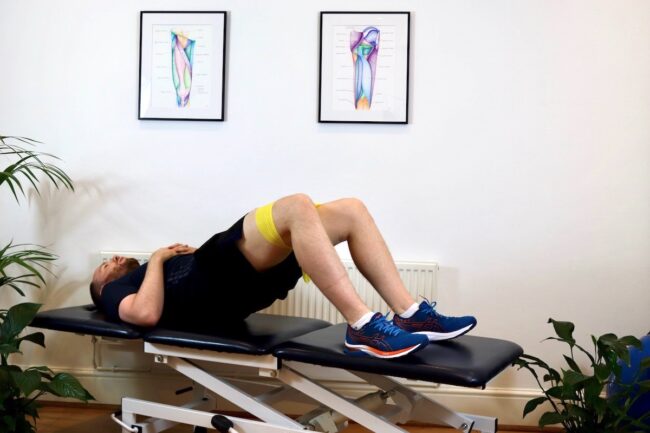
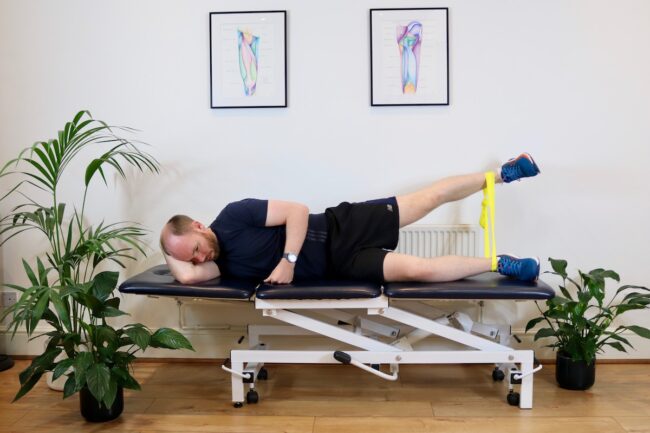
Lie on your side with a band tied in a loop around your ankles. Make sure your leg is straight and in line with your body, and have your pelvis slightly tipped forwards. Lift your leg up and backwards against the resistance of the band. You should feel this working your glute muscles.
Lift and lower 12 times, then rest for 2-3 minutes, then repeat for 3 sets.
Stand on one leg with the ball of your foot on the edge of the step. Keep your knee straight thoughout. Lift your heel up as high as you can, then lower it as far as you can off the edge of the step. You should feel this working your calf muscle.
Lift and lower 12 times, then rest for 2-3 minutes, then repeat for 3 sets.
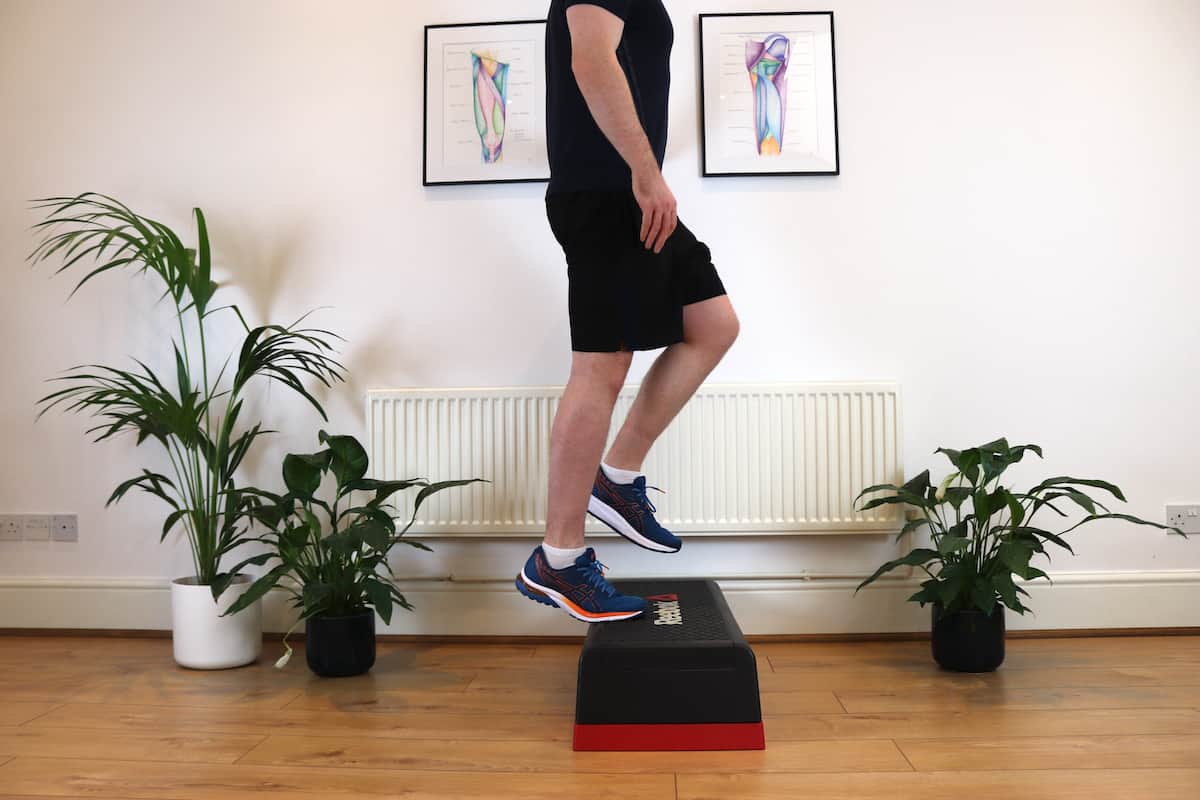
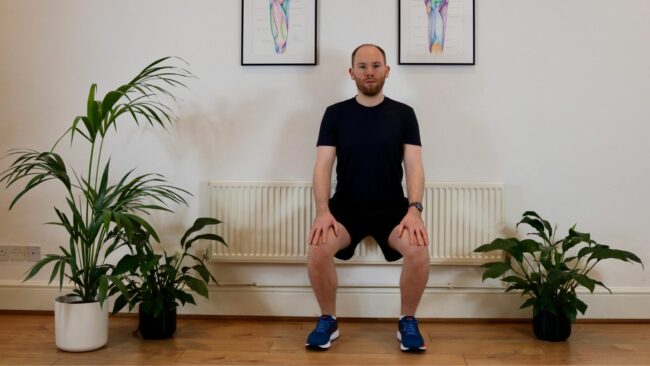
Once your pain has settled this is a good exercise to progress onto.
Lean your back, flat against the wall with your ankles under your knees. You can choose a knee angle that is challenging but not painful, and progress by holding lower positions. You should feel this working your quadriceps muscles as well as your glute muscles.
Hold this wall sit for 30-60seconds, rest for 2-3 minutes then repeat 3 times.
Osgood-Schlatter disease is caused by repetitive traction on the tibial tuberosity by the patella tendon and quadriceps muscle. Therefore it is important to have a period of reduced load to this area while the irritation, pain and inflammation settle. Exercises that produce high forces through the quadriceps should be avoided in this phase, and only gradually reintroduced once the pain has completely eased. Higher forces are generated with quicker more powerful movements, sudden knee extension such as kicking a ball, sprinting or jumping are all examples that should be avoided in the initial phase. These types of exercises should be gradually phased into the rehabilitation programme, checking the symptom response with each increase of load.
This is not medical advice. We recommend a consultation with a medical professional such as James McCormack. He offers Online Physiotherapy Appointments for £45.